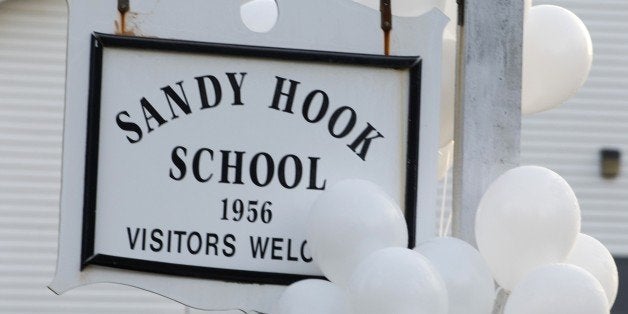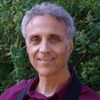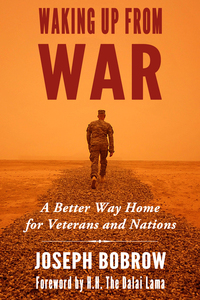
Working with thousands of Iraq and Afghanistan veterans and their families has taught me that war trauma -- be it abroad or a result of cumulative, traumatic, war-like violence at home -- operates like an IED blast. The shockwaves shatter lives on multiple dimensions at once: Within body and mind, heart and soul, in families, care providers, communities, institutions, policy makers, legislators, and leaders at every level, right up to our president. The impacts disable vital connections and compromise the very capacities necessary for responding effectively, often resulting in maladaptive reactions that perpetuate or inflame the trauma. Restoring the connectedness and capacities that enable cumulative trauma to be processed is central.
On December 14, 2012, I watched scenes from the tragic shootings at Sandy Hook School in Newtown, Connecticut. I saw people hugging, comforting, and supporting one another. Connecting. We witnessed the sudden shock and the utter helplessness. The shearing loss of loved ones and of meaning. And then people came together again, at the interfaith ceremony. Not to meet the President, they said, but to support one another and feel the comfort of one anothers' presence.
The impacts of traumatic loss were evident: glazing over, shock, numbness, disbelief, utter helplessness, and despair. People were literally blown away. But they made use of every shred that remained of their responsive capacity to connect with one another, within themselves, and with something greater than themselves. They created spaces, small and large, where they could come together to regenerate safety, trust, and hope, safe environments where their traumas could be represented. Not forgotten or eliminated but transformed from haunting and disabling traumatic residues into memories we can think about and integrate.
Without conscious effort, residents were repairing the pervasive fracturing and regenerating compromised capacities for connection. Unable to fully process or understand, they helped one another stand the trauma, stay awake, and stave off the familiar dissociative fog that ensues after such shocking, unspeakable loss and horror. The community held in trusteeship, as it were, emotions too overwhelming for them to yet explore. It struck me: this was the heart's natural intelligence at work.
On August 9, 2014, a police officer killed an unarmed black teenager in Ferguson, Missouri, sparking massive street protests. The local police department responded by bringing in military vehicles, using tear gas, and confronting demonstrators who were primarily peaceful in a threatening manner, as if they were enemies in a war zone. This inflamed the situation and caused an alarming escalation. When the governor placed the Missouri Highway Patrol in charge of security, things changed.
Ron Johnson, a captain in the Highway Patrol, took a different approach, backing away from the ineffective tactics used by the police. He took to the streets by himself to meet and hear from the local people. "We're gonna start from today," said Capt. Johnson. "We're not gonna look back in the past when we talked about boots on the ground . . . my boots will be on the ground and actually I plan on tonight myself walking to QuikTrip, that has been called Ground Zero, and meeting with the folks there. And so we are gonna have a different approach, the approach that we're in this together [italics added]."
We've seen a similar de-escalating and humanizing response from Dallas Police Chief David Brown and his department. Judge Clay Jenkins of Dallas County said, "You can really feel the palpable support of the community for each other and our police officers and you can see it behind me, they've been coming here in a steady stream since the events unfolded Thursday night and Friday morning. There are thousands of people down at the vigil. And we appreciate that. These officers need that. It's helpful and it's appreciated."
He continued, "We need this to mean something to this community and to this country. It's a senseless act of hate. But if it can mean that it's the opportunity to open that dialogue so that white people think about what a black family goes through as they teach their children a different set of rules than a white family will teach their children, so that non-first responder families think about what a first responder family goes through, wondering if their loved one is going to come home."
We are creatures of meaning. I've heard hundreds of veterans struggle with the meaning of their military service, wanting to feel that the loss and damage was not in vain.
As if sketching out a road map for community action, Judge Jenkins continues, "All the issues that are going on with our first responders right now as they deal with grief and they still go about doing their jobs on very little sleep. If we can begin to see things from each other's perspective, then that that gives it meaning and that leads to a stronger Dallas.
"We have shown compassion in the past in other instances and we`re ready to do that now. And the national spotlight can help us by not letting the politicians and the talking heads pull us back into our partisan corners, let`s use this as a time to have a real conversation and pass some real legislation that helps our officers that helps our communities, that keeps us safer."
Mutual support, vigorous action that refrains from striking out in violence, grieving, real conversations, moving into policy initiatives, creating safety.
As the racial divide and tensions grow, it is instructive to examine other on-the-ground examples of people wanting be known and responded to as fully human, rather than as a stereotype:
At a restaurant outside of Pittsburgh a server attempted to seat an African American couple right next to a group of police officers. "The guy looks over at one of the police officers and was like, 'Nah I don't want to sit here.'" Officer Chuck Thomas said, "I looked over and said, 'It's okay sir. You won't have to worry about it, we won't hurt you. He looked at me hard again and said he's not sitting here and walked away." Thomas and the other officers paid the couple's dinner bill. He said he just wanted to convey that, "We're not here to hurt you, we're here for you. We work for the public." When the officers left, one of the people who wanted no part of them smiled and said thank you.
Dr Bryan Williams of Parkland Memorial Hospital, Dallas, is a black physician who cared for injured white Dallas Police officers. Watch and listen as he struggles to retain the capacity for nuanced, complex thinking, holding two and more emotional experiences in his mind at the same time and expressing them vividly,
"...First and foremost, I stand with the Dallas Police Department. I stand with law enforcement all over this country. This experience has been very personal for me and a turning point in my life. There is the added dynamic of officers being shot. We routinely care for multiple gunshot victims ... but the preceding days of more black men dying at the hands of police officers affected me. I think the reasons are obvious. I fit that demographic of individuals.
"But I abhor what has been done to these officers and grieve with their families. I understand the anger and the frustration and the distrust of law enforcement. But they are not the problem. The problem is the lack of open discussions about the impact of race relations in this country. And I think about it every day ... that I was unable to save those cops when they came here that night. It weighs on my mind constantly. This killing, it has to stop. Black men dying and being forgotten, people retaliating against people sworn to defend us. We have to come together and end all this."
Back to restaurants and breaking bread together, "When I see police officers eating at a restaurant," he continues, "I pick up their tab. Once when I was out with my daughter getting ice cream, I bought some for several Dallas Police officers. I wanted her to see me interacting with police in that way so she didn't grow up with the same burden that I carry when it comes to interacting with law enforcement."
Dr. Williams uses his voice to be seen as the complex human being he is, "I want Dallas Police to see me, a black man, and understand that I support you, I will defend you, and I will care for you. That doesn't mean that I don't fear you. That doesn't mean that when you approach me I won't immediately have a visceral reaction and start worrying for my personal safety. But I'll control that as best I can and not let that impact how I deal with law enforcement."
That's a beginning.
In Part 3, War Zone Trauma At Home: Healing The Hidden Injuries, I'll describe how Coming Home retreats transform trauma, foster post-traumatic growth, eliminate stigma, and provide resources for professional care when necessary. I'll also suggest ways to create community-based therapeutic programs that transform violent trauma and empower survivors and communities.

